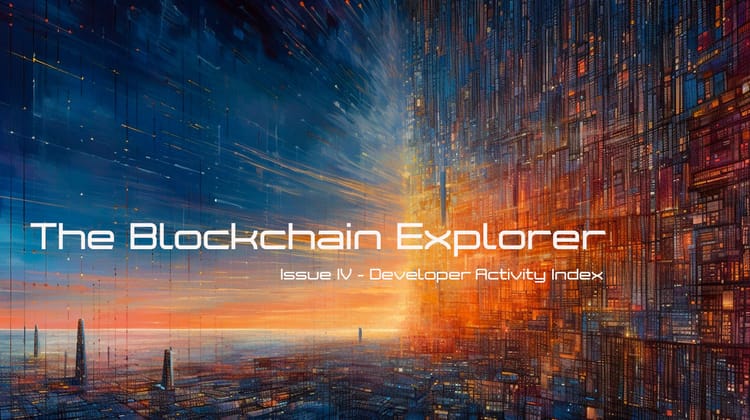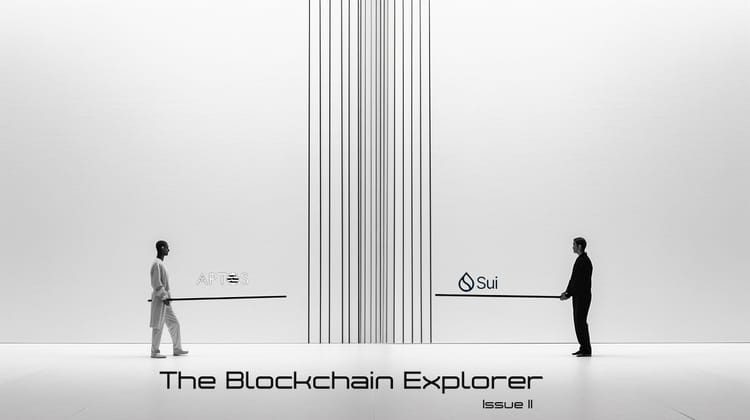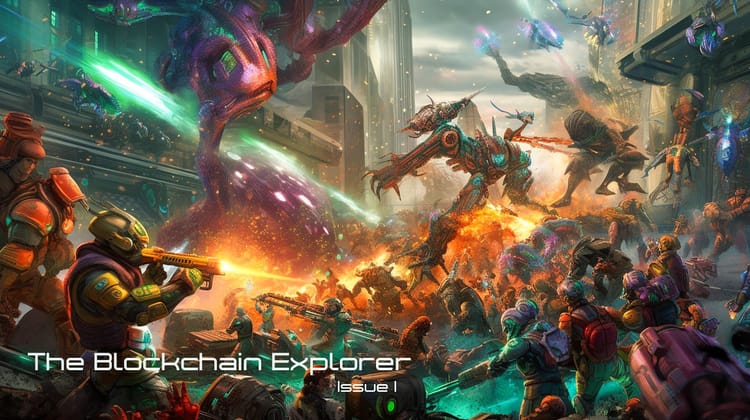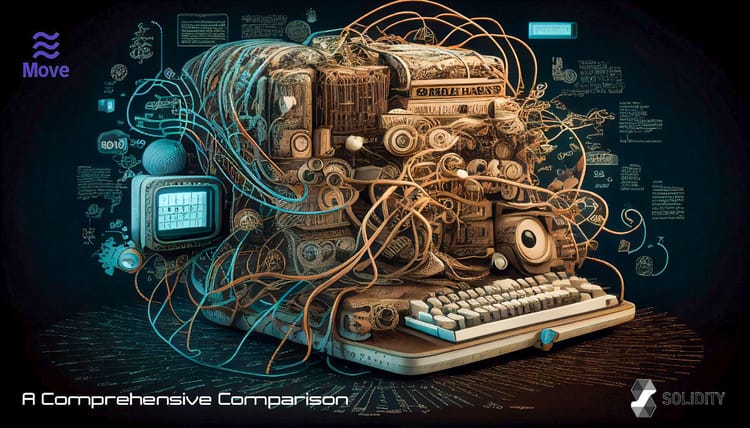Move-ing Forward: Getting started with Sui Blockchain's Powerful Programming Language
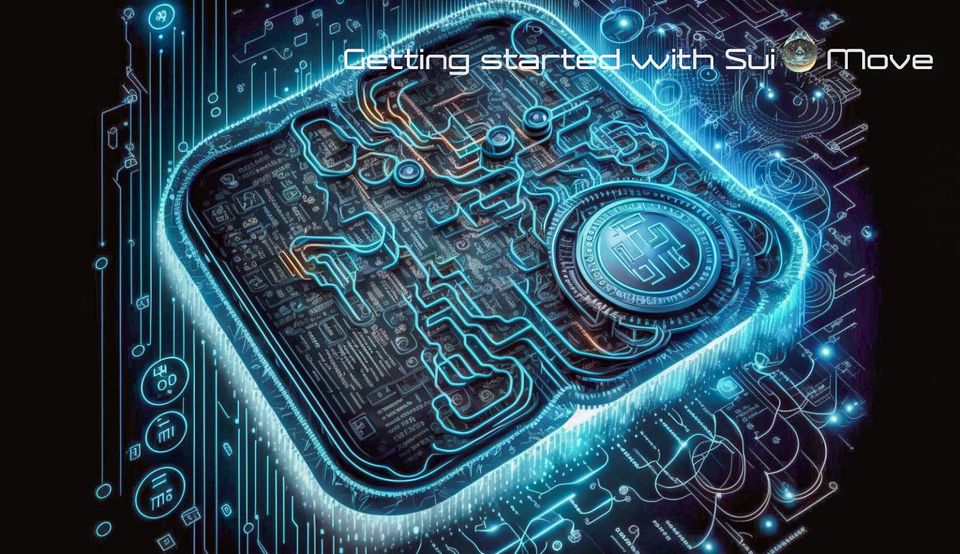
Sui Move, an open-source language derived from Facebook's Move, is designed to empower developers to create safe and efficient smart contracts for the next generation of Web3 applications. Initially developed for the Diem blockchain, Sui Move transcends platform boundaries, fostering a unified ecosystem of libraries, tools, and developer communities across diverse blockchain networks. This innovative language emphasizes scarcity, access control, and flexibility, allowing developers to define, create, and manage programmable Sui objects representing user-level assets.
With its robust object system, Sui Move builds upon the foundations of Move while introducing additional features and restrictions tailored for modern smart contract development. In this comprehensive guide, we'll delve into the core concepts of Sui Move and explore its unique capabilities, equipping you with the knowledge and skills required to harness the full potential of this cutting-edge language for the Sui blockchain and beyond.
Let's start with the beginning - What is Move?
Move: The Game-Changer in Blockchain Programming and Smart Contract Development
Move is a revolutionary programming language specifically designed for creating secure, reliable, and efficient smart contracts in the ever-expanding world of blockchain technology. Developed by Facebook as the foundation for the Diem blockchain, Move is engineered to prioritize safety and resource management, ensuring an optimal environment for building next-generation decentralized applications.
At its core, Move emphasizes scarcity and access control, utilizing unique resource types to prevent the accidental duplication or loss of digital assets.
This innovative approach, coupled with strict typing and module access privileges, minimizes the risk of programming errors and vulnerabilities, allowing developers to create more secure and trustworthy smart contracts. Furthermore, Move's flexible design allows for seamless integration across various blockchain platforms, fostering collaboration and resource sharing among developer communities. This cross-platform compatibility empowers developers to leverage a diverse array of tools, libraries, and resources, accelerating innovation and driving the growth of the blockchain ecosystem.
By harnessing the power of Move, developers can unlock new possibilities in smart contract development, creating robust and secure applications that will shape the future of decentralized technology.
Let's explore how Sui Move is different from Diem's Move
Sui Move vs. Core Move: Exploring the Evolution of Blockchain Programming
Sui Move is a powerful adaptation of the core Move language, specifically designed to address the needs and limitations of the ever-growing blockchain ecosystem. While Sui Move maintains the core principles of Move, it introduces several key differences that significantly enhance the programming model, scalability, and user experience for developers.
- Object-centric global storage: Unlike Core Move, which relies on global storage for resources and modules, Sui Move eliminates the need for global storage operations. Instead, it leverages Sui's own object-centric storage system, significantly improving the efficiency and scalability of storage-heavy applications such as marketplaces and social apps.
- Addresses as Object IDs: In Sui Move, the address type is used to represent Object IDs rather than user accounts. This simplification streamlines the programming model and enhances the security of the system.
- Objects with key abilities and globally unique IDs: Sui Move distinguishes between internal objects and those stored in Sui storage by leveraging the key ability in Move. This allows for secure serialization and deserialization of objects at the Move-Sui boundary.
- Module initializers: Sui Move introduces a special initializer function for modules that are executed during publication. This allows for the pre-initialization of module-specific data, enhancing the overall programming experience.
- Entry points accepting object references as input: Unlike Core Move, Sui Move enables entry functions to accept object references as input, offering a more seamless integration between Sui and Move.
In conclusion, Sui Move builds upon the foundation of Core Move while addressing the limitations and challenges faced by blockchain developers. This innovative adaptation of Move offers enhanced throughput, reduced finality delays, and a more user-friendly programming experience.
Now you got some introduction about Sui Move, Let's get our hands dirty and install
Install SUI: A Step-by-Step Guide
1) Prerequisite: Make sure you have all the essential packages.
These are the prerequisite for installing Sui binaries on Linux
| Prerequisite |
| cURL |
| Rust and Cargo |
| Git CLI |
| CMake |
| GCC |
| libssl-dev |
| libclang-dev |
| libpq-dev |
| build-essential |
One script to take care of all the above packages in Linux - CoinTranscend Github
- Download install-prereq.sh
chmod +x install-prereq.sh
./install-prereq.sh After successful execution, you should see the message - All packages installed/updated successfully!
2) Install Sui binaries: After this, you do need to open a new shell to install Sui binaries for the `cargo` command PATH update, or you can run it using the full path :
$HOME/.cargo/bin/cargo install --locked --git https://github.com/MystenLabs/sui.git --branch testnet sui
Use the below if you are using the new shell
cargo install --locked --git https://github.com/MystenLabs/sui.git --branch testnet sui
3) IDE setup: Configure the Integrated development environment as per the Sui documentation
Start programming smart contracts
Now the fun part. Here are some useful tutorials to get you started on Sui Move Programming -



Innovative Features of Move
Some of the unique features of Move language that will be revolutionizing the way we develop smart contracts and create dapp on Sui :
- Safety-first design: Move is built with a strong emphasis on safety, ensuring the prevention of common pitfalls like asset duplication or accidental loss. Its innovative resource system and strict typing significantly reduce the risk of programming errors and vulnerabilities.
- Scarcity and access control: Move's programming model prioritizes the scarcity of digital assets and enforces strict access control. This ensures that only authorized entities can access or modify assets, paving the way for more secure and reliable blockchain applications.
- Cross-platform compatibility: Move's flexible design allows for seamless integration across various blockchain platforms. This fosters collaboration and resource sharing among developer communities, accelerating innovation and driving the growth of the blockchain ecosystem.
- Module encapsulation: Move encourages the use of modules, which provide encapsulation for code and resources. This facilitates code reuse, enhances security, and simplifies the development of complex applications.
- Linear types and resource management: Move introduces linear types, ensuring that resources are always uniquely owned and cannot be accidentally duplicated or lost. This powerful feature enables developers to create smart contracts that better manage digital assets and prevent common programming mistakes.
Navigating Move Language Challenges
Despite the numerous benefits of Move language, it is essential to acknowledge and address the challenges it presents to ensure a smooth development experience.
- Steep learning curve: Move language introduces several new concepts and features that might be unfamiliar to developers experienced with traditional programming languages. This may result in a steep learning curve, requiring developers to invest time and effort in understanding Move's unique paradigms.
- Limited ecosystem and libraries: As a relatively new language, Move's ecosystem is not as mature as other established languages, such as Solidity. This means a limited number of libraries, tools, and resources might be available, which could pose challenges for developers seeking to build complex applications quickly.
- Integration with existing systems: While Move language offers cross-platform compatibility, integrating it with existing blockchain systems or legacy infrastructure might still present challenges. Developers need to ensure seamless communication between Move-based smart contracts and other components of the system.
- Performance optimization: Although Move prioritizes safety and resource management, optimizing performance is crucial for building scalable and efficient applications. Developers must strike a balance between the language's safety features and the performance requirements of their applications.
- Adoption and community support: Move language must compete with more established languages like Solidity, which enjoys widespread adoption and a strong developer community. Encouraging adoption and fostering a supportive community will be crucial to Move's long-term success and growth.
Conclusion
In conclusion, Sui Move is a groundbreaking development in the world of blockchain programming, taking the core strengths of Move language and extending them to provide a more accessible and powerful smart contract platform. By implementing object-centric design, and offering innovative features like module initializers and unique object IDs, Sui Move delivers an enhanced development experience tailored for today's ever-evolving decentralized applications.
I encourage developers to explore Sui Move and leverage its unique features to create scalable, secure, and efficient dapp solutions. Embrace the potential of Sui Move and propel your blockchain projects to new heights, shaping the future of the Sui decentralized ecosystem.
Please share your thoughts on the article by clicking below Emoji ...
Disclosure
*The information provided on this cryptocurrency blog is for educational and informational purposes only and should not be construed as financial, investment, or trading advice. The authors, contributors, and administrators of this blog are not licensed financial professionals and do not hold any formal qualifications in the fields of finance, economics, or cryptocurrencies.
The content on this blog is based on the authors' personal opinions, experiences, and research, and should not be considered as professional financial guidance. While we strive to provide accurate, up-to-date, and reliable information, we cannot guarantee the accuracy or completeness of the information presented. Cryptocurrency markets are highly volatile, and investments in cryptocurrencies and related assets carry a substantial risk of loss.
Before making any financial decisions or investments, you should consult with a qualified financial advisor or perform your own research and analysis. Any actions taken based on the information provided on this blog are at your own risk, and the authors, contributors, and administrators of this blog cannot be held liable for any losses or damages resulting from the use of the information found herein.
By using this blog, you acknowledge that you have read and understood this disclosure and agree to assume full responsibility for any decisions or actions you take based on the information provided.*







